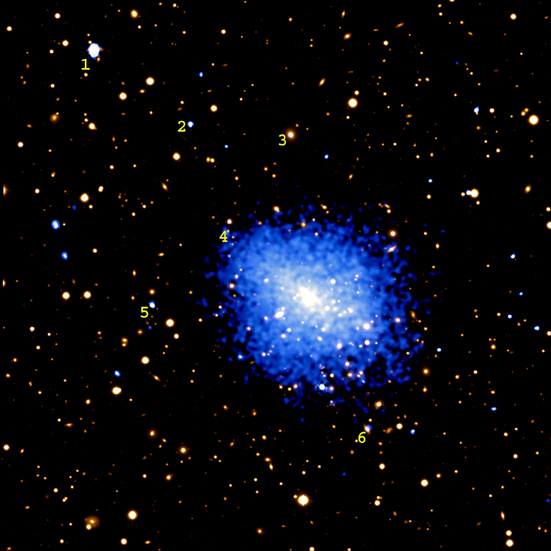
 Credit: NASA/CXC/P.Martini et al.
Credit: NASA/CXC/P.Martini et al.
Surprisingly Active Galaxies
Many galaxies (if not most galaxies) play host to supermassive black holes, i.e., black holes of a million solar masses or more. Such black holes are thought to eat large clouds of gas and dust, and if sufficient such food exists in the host galaxies, those black holes will shine brightly in X-rays. Conversely, galaxies which lack this black hole "food" should have rather inactive black holes (and be faint in X-rays). A new image by the Chandra X-ray Observatory of the cluster of galaxies called Abell 2104 may revise this rather simple idea. Chandra has identified X-ray bright supermassive black holes in 6 cluster galaxies; these galaxies are identified in the above optical-X-ray composite image. This is unusual since the host galaxies should be composed of stars, with little gas and dust. So on what are the black holes feasting? Stars themselves or perhaps even so-called dark matter?
Last Week *
HEA Dictionary * Archive
* Search HEAPOW
* Education
Each week the HEASARC
brings you new, exciting and beautiful images from X-ray and Gamma ray
astronomy. Check back each week and be sure to check out the HEAPOW archive!
Page Author: Dr. Michael F. Corcoran
Last modified €


